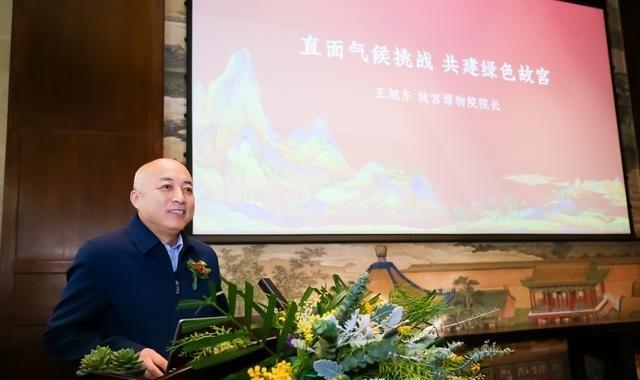What can an empty mineral water bottle do? In the Palace Museum's "Zero Waste" project, 9 waste bottles have been reconstructed and can be woven into a cloth about 1 meter long. Add the ingenuity of the cultural and creative engineers, and add new "green" cultural creations such as scarves printed with exquisite Chinese patterns, environmentally friendly cloth bags painted with ruibea patterns, and eye masks painted with spin spinner paintings.

On the 20th, the Palace Museum held a summary meeting for the second anniversary of the "zero waste" project: in the past two years, the average garbage classification and recycling rate of the Palace Museum has reached 45%, the per capita garbage reduction rate has reached 89.2%, and the total carbon emission reduction per year is equivalent to the carbon sink absorbed by 7719 trees in a year. The green campaign directly led to the participation of about 3,000 Forbidden City staff, 11 million visitors and 40,000 tour guides.
At the wrap-up meeting, the story of the rebirth of the mineral water bottle was the most eye-catching. Every day, the Staff of the Forbidden City regularly collects the mineral water bottles discarded by the audience in the garbage bins. Garbage sorting trucks will pick them up at regular intervals. The bottles are bathed in a 90°C heat and then pressed into "bricks." The staff said that a "brick" collected about 750 kilograms of plastic bottles.
From "bricks" to cultural and creative products, the process is complicated. At present, the mineral water bottles on the market are mostly made of PET (polyethylene terephthalate) plastic. The waste bottle is first beaten back to its original form, PET particles, which are recycled into highly malleable silk. Finally, after about 8 days of collation, it was merged into a large volume. It has been estimated that on average, every 9 bottles can be woven into about 1 meter of cloth. Cultural creators reuse these eco-friendly cloths to make products such as silk scarves, bags and eye masks. About every 8 waste bottles can be made into an environmentally friendly cloth bag about 40 cm square.
The recycled garbage has also become other "treasures". Artist Han Meilin's team used plastic bottles and caps recycled from the Forbidden City, straws and used coffee paper cups to create a FuNiu sculpture. The zero-waste compost flower beds in the Jianting Square of the Forbidden City have planted more than 20 kinds of native plants in Beijing. According to experts, this is a miniature ecosystem - compost bins decompose garden garbage into organic fertilizer, insect houses attract beneficial insects, earthworm towers cultivate earthworms, and ecological water bowls collect rainwater to provide water for insects and birds.
From January 2020, the Forbidden City "Zero Waste" project was launched. Subsequently, the hospital carried out diversified training and incentives for employees to promote "zero abandoned office". In the future, the project also plans to carry out youth science popularization activities. The Forbidden City said that doing a good job in garbage classification is the most precious gift we can pass on to the future.
(Source: Beijing Daily)
For more exciting content, please download the "Greater Wuhan" client in major application markets.